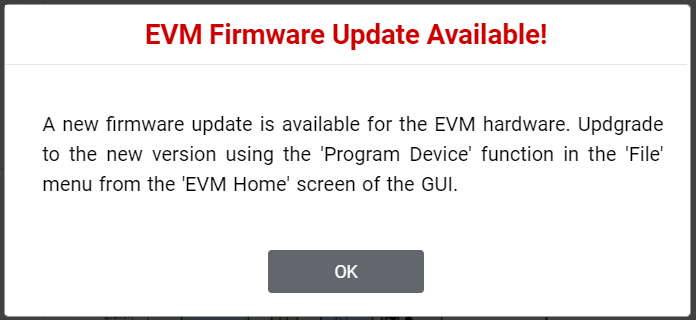SLVUC46D March 2021 – November 2023
4.3.4 Updating Firmware
Your EVM includes the ability to update the MCU firmware controlling the DRV824x-Q1/ DRV814x-Q1 device without any additional hardware. There is a pop-up every time the GUI Driver Control page is selected after an EVM connection is made and if a new update becomes available, then the update can be seen in Figure 4-4.
 Figure 4-9 EVM Firmware Update
Pop-up
Figure 4-9 EVM Firmware Update
Pop-upThe user can update the EVM to the latest firmware by simply going to File -> Program Device from either the EVM Home Page or the Driver Control page as shown in Figure 4-10.

Figure 4-10 Update Firmware